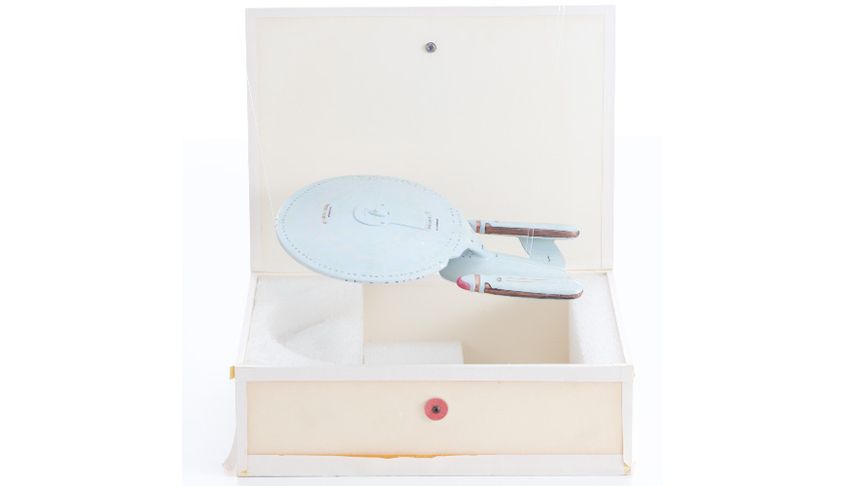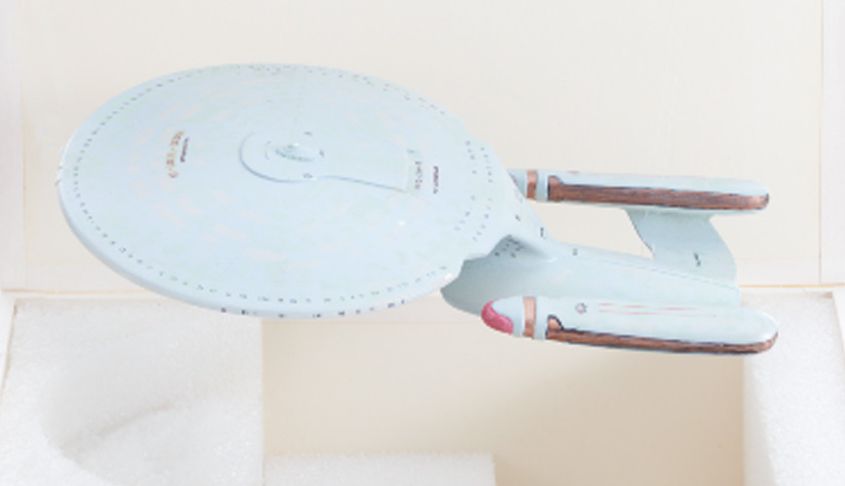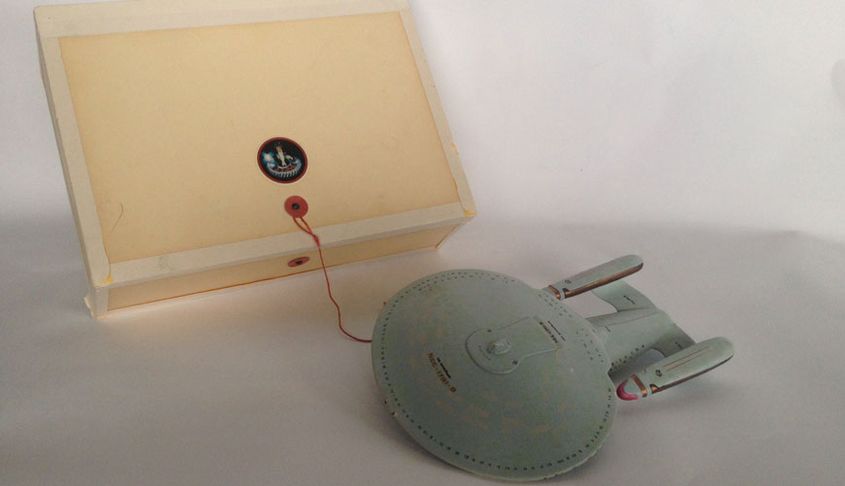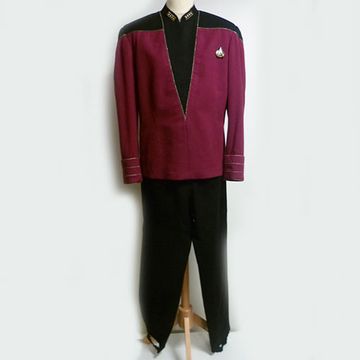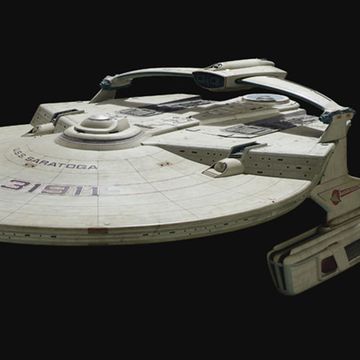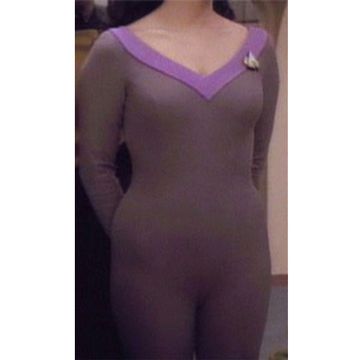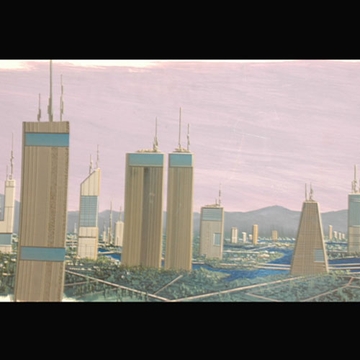ILM original USS Enterprise-D pre-production model
This model was built by Greg Jein at Industrial Light & Magic, George Lucas' special effects company, at the express request of Star Trek creator. Indeed Gene Roddenberry wanted a 3D version to better visualize the new version of the USS Enterprise, that was drawn by Andrew Probert, before giving the Go-Ahead to ILM to built the shooting model. The model was specially brought to him by an ILM representative, at his Paramount office in Los Angeles. This small model is historic because it is the first version in volume of the USS Enterprise-D!
When ILM was chosen as one of the company to do the show special effects, the producers sent the company the orthographic drawings they had prepared. It was up to Gregory Jein (aka Greg Jein), employed at ILM at the time, to come up with a concept model to show if the intent was understood. First a clay study model was presented to the producers and it was then that Probert realized that orthographic views were not sufficient and a more hands-on approach was needed. The first thing that they had sent to Andrew Probert was a two-foot maquette based on the drawings that we had sent up. The only thing that Probert had guessed wrong, in defining the shape of the ship from six views, was the shape of the wing as seen from the top and bottom. Probert felt the most important profile was the side view. Looking at the wing top or bottom produced a different wing shape than seen from the side. Greg Jein got the drawings and the approval, after all the bids from all the other companies came in, ILM got the contract. Jeff Mann was the head of the model shop at that time, and greg Jein was the lead man on the patterns. So they just interpreted Andrew Probert drawings as best as we they could.
Adopting the hands-on approach from then on, Probert kept in very close contact with the model shop of ILM during the build of the two models. A second clay study model was commissioned (constructed around a carton skeletal structure for internal integrity), this time as a two-part model to reflect the saucer separation capability. This time the model followed more closely the lines of the ship, Probert had in mind. By the time the model was delivered to the producers, construction on the larger studio model had already started.
Once given the go-ahead, a second set of one-to-one scale working drawings of the six-foot model were prepared and sent to ILM, and from then on the model-shop was on a tight schedule. "The called us on a Friday. They said, "OK, we accept your price to build the ship; we want you to start on Monday and build it in 10 weeks." I said, 12 weeks. I knew what it took to build other ships, and I knew that this one would be more difficult.", Jeff Mann remembered.
First order of business for Mann was composing the team that was to build the two models. As lead modelers he chose Greg Jein (as pattern or master lead) and Ease Owyeung. The team was further filled out by Sean Casey, Bill Concannom, Bill George, Wesley Seeds, Larry Tan and Howie Weed, while Steve Gawley was given the task of preparing the Excelsior-class studio model, for its re-use.
This model was also used by John Knoll in order to film a test in order to create (before CGI) a satsifying elastic warp effect of the Enterprise for Star Trek : The Next Generation., called slit-scan
- All
- Screenused







